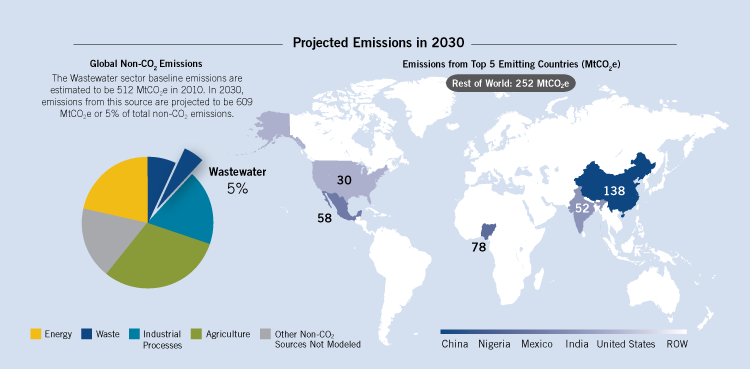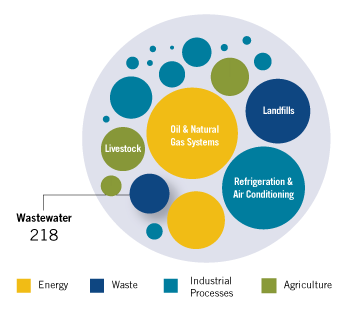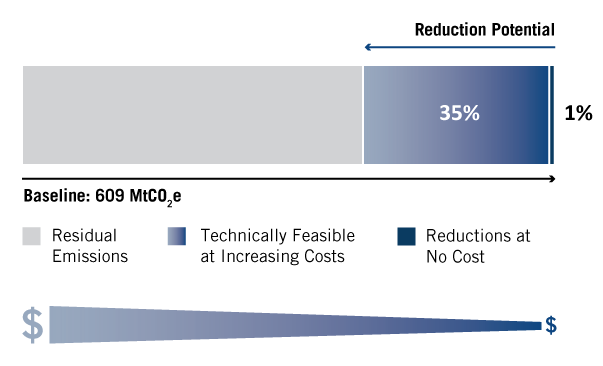Global Mitigation of Non-CO2 Greenhouse Gases: Wastewater
Key Points
- Methane (CH4) emissions from wastewater treatment accounted for over 500 million metric tons of carbon dioxide equivalent (MtCO2e) in 2010 and are projected to grow 20% by 2030.
- The estimated maximum abatement potential in 2030 is 218 MtCO2e, or 36% of projected emissions.
- Abatement measures with costs less than $30 tCO2e can achieve a 15% reduction in CH4 emissions in 2030.
Sector Description
Wastewater is the fifth largest emitter of anthropogenic CH4, accounting for more than 500 MtCO2e in 2010; wastewater treatment is also a source of nitrous oxide (N2O) emissions. Domestic and industrial wastewater treatment activities can lead to venting and fugitive emissions of CH4, which are produced when organic material decomposes under anaerobic conditions of wastewater in a facility. Most developed countries use aerobic wastewater treatment systems to minimize the amount of CH4 generated, but many developing countries rely on systems such as septic tanks, latrines, open sewers, and lagoons, which allow for greater levels of anaerobic decomposition.
 View or download the full-size image here.(127 K, PNG)
View or download the full-size image here.(127 K, PNG)
Emissions Reduction Potential
Assuming full implementation of current technology, emissions in the wastewater sector could be reduced by up to 218 MtCO2e in 2030. This accounts for 5% of the 4,615 MtCO2e in global reduction potential in 2030.
 View or download the full-size image here.(101 K, PNG)
View or download the full-size image here.(101 K, PNG)
Abatement Potential
The global abatement potential of CH4 from wastewater treatment is 138 MtCO2e in 2020, rising to 218 MtCO2e in 2030. This level of CH4 mitigation is considered to be the technological maximum abatement potential because high-cost abatement measures in the wastewater treatment sector significantly constrain the abatement achievable at lower carbon prices. Cost-effective emissions reductions are limited to 3.4 MtCO2e—less than 1% of business as usual (BAU) emissions in 2030.
 It would be cost-effective to reduce emissions by 1%, compared to the baseline, in 2030. An additional 35% reduction is available using technologies with increasingly higher costs.
It would be cost-effective to reduce emissions by 1%, compared to the baseline, in 2030. An additional 35% reduction is available using technologies with increasingly higher costs.
View or download the full-size image here.(39 K, PNG)
Abatement Measures
CH4 emissions from wastewater can be significantly reduced through improvements to infrastructure and equipment. Abatement measures available in the wastewater sector include installing aerobic wastewater treatment plants on an individual or centralized scale and installing anaerobic wastewater treatment plants with cogeneration. Factors such as economic resources, population density, government, and technical capabilities are important in determining the potential for mitigating emissions from the wastewater sector.
 Emissions reductions by technology in 2030 at $0/tCO2e and at higher prices.
Emissions reductions by technology in 2030 at $0/tCO2e and at higher prices.
View or download the full-size image here.(40 K, PNG)
